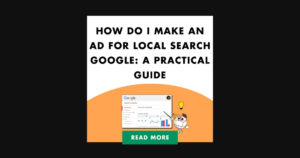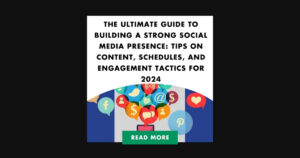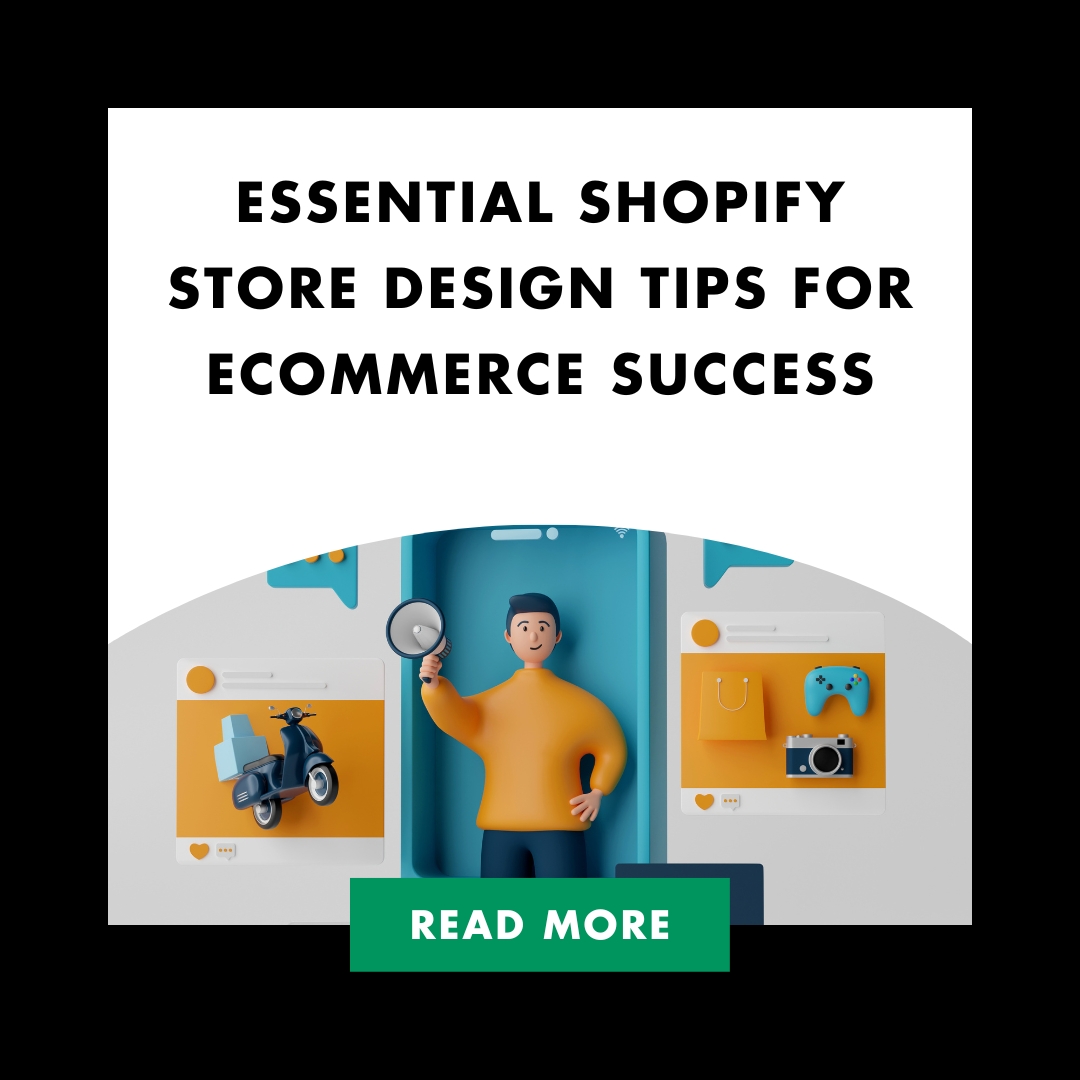Essential Shopify Store Design Tips for eCommerce Success
Shopify store design plays a crucial role in the success of any eCommerce business. A well-designed online store not only enhances user experience but also helps in increasing conversion rates and boosting sales. In this comprehensive guide, we’ll delve into how to design an effective Shopify store that can help you stand out from the competition by exploring aspects such as selecting a cohesive color palette and font style for consistent branding, investing in high-quality product images, and choosing the right theme for your specific niche.
We’ll dive into the importance of selecting a cohesive color palette and font style to create consistent branding throughout your website. Additionally, we’ll discuss investing in high-quality product images and choosing the right theme for your specific niche.
You’ll learn about product specialization techniques that can benefit small businesses, as well as key optimization strategies to improve conversion rates. Furthermore, we will cover effective navigation options such as breadcrumb navigation and personalized browsing experiences through collection pages with filters.
Lastly, we’ll delve into leveraging powerful Shopify apps tailored for small businesses along with A/B testing methods to fine-tune your site’s performance. We will also share design elements best practices like image compression techniques and creating an informative FAQ section. To top it all off, you’ll discover successful Shopify stores that serve as inspiration for implementing unique design aspects within your own eCommerce venture.
Table of Contents
Color Palette and Font Style
Utilizing Color Palette Generators for Consistent Branding
- Select Complementary Colors: Choose colors that work well together to create harmony within your design.
- Create Contrast: Use contrasting shades to highlight important elements such as call-to-action buttons or sale banners.
- Incorporate Brand Identity: Make sure the chosen colors align with your existing logo, packaging, and other marketing materials.
In addition to selecting an appropriate color scheme, it’s essential to choose easy-to-read body fonts for your Shopify store. This ensures visitors can effortlessly navigate through product descriptions and other site content without straining their eyes.
Importance of Selecting Easy-to-Read Body Fonts
- Serif vs Sans-serif: While serif fonts are considered more traditional, sans-serif options often provide better readability on digital screens due to their clean lines.
- Avoid Decorative Typefaces: Stick with simple font styles that don’t distract from the main content or make text difficult to read at smaller sizes (e.g., Arial or Helvetica).
It is essential to choose a color palette and font style that will create an attractive, cohesive look for your store. By selecting the right photography style and theme, you can further enhance the overall visual appeal of your eCommerce website.
Photography Style and Theme Selection
- User experience: Select a theme with an intuitive layout that makes it easy for customers to navigate through the store and find similar products.
- Mobile responsiveness: Ensure the chosen theme is optimized for mobile devices as most online shoppers use their smartphones for browsing eCommerce websites.
- Loading speed: A fast-loading website contributes positively towards user experience and search engine rankings, so opt for themes with minimal design elements and quick load times.
- Built-in features: Some themes come with built-in functionalities like product filtering or newsletter sign-up forms which can save time during the web design process.
In addition to these factors, take inspiration from successful Shopify stores within your niche by examining their choice of color palette, font styles, navigation options, and overall aesthetics. This will assist you in constructing a persuasive online retail experience that resonates with shoppers while keeping true to your specific brand image.
It is important to invest in high-quality product images and choose a Shopify theme that will best suit the needs of your business. With careful consideration, you can ensure an optimal user experience for customers which will lead to increased conversions. Moving on, let’s discuss product specialization and optimization techniques that small businesses should consider implementing.
Product Specialization and Optimization Techniques
Benefits of Product Specialization for Small Businesses
- Focused marketing efforts on high-demand items
- Better inventory management and cost control
- In-depth knowledge about the product niche, leading to improved customer support
- Easier decision-making process for customers due to limited options
Key Optimization Techniques for Higher Conversion Rates:
- Showcase Flagship Products: Highlight your best-selling or most popular products prominently on the homepage.
- Promote Delivery Dates Instead of Speed: Customers often prefer knowing when their order will arrive rather than how fast it will be shipped. Display estimated delivery dates near product images or during the checkout process.
- Use Social Proof: Encourage testimonials, reviews, and ratings from satisfied customers. This helps build trust among potential buyers. You can also use apps like Yotpo or Loox Reviews that integrate seamlessly with Shopify stores.
- Subdivide Long Descriptions: Break down lengthy product descriptions into sections/headings which makes them easier to read and digest by users.
- Allow Guest Checkout Option: Simplify the checkout process by allowing users to complete their purchase without creating an account. This can help reduce cart abandonment rates.
- Connect Google Analytics: Track customer behavior data on your Shopify store with the help of Google Analytics, which provides valuable insights into user engagement and helps you make informed decisions for optimizing conversions. Learn how to set up Google Analytics for your Shopify store here.
Product specialization and optimization techniques are essential for small businesses to increase conversion rates, which is why it’s important to implement effective navigation options and a personalized browsing experience. By implementing breadcrumb navigation and creating collection pages with filters, customers will be able to easily find what they’re looking for in your store.
Key Takeaway:
Small businesses should specialize in a few products to optimize conversions and improve the shopping experience for customers. Key optimization techniques include showcasing flagship products, promoting delivery dates instead of speed, using social proof, subdividing long descriptions, allowing guest checkout options, and connecting Google Analytics to track customer behavior data.
Effective Navigation Options & Personalized Browsing Experience
Implementing breadcrumb navigation
Breadcrumb navigation can be easily added to your Shopify store using built-in features or third-party apps like Breadcrumb App by Elfsight. This type of navigation displays the user’s current location within the website hierarchy, helping them understand where they are in relation to other pages and categories.
Creating collection pages with filters
To further personalize the browsing experience, consider creating collection pages with filters. These allow buyers to narrow down search results based on criteria such as price range, ratings, color, size or brand name. By catering specifically towards individual preferences and needs, you create an enjoyable shopping experience that encourages repeat visits. To implement filtering options on your collections page follow this guide from Shopify Help Center.
Incorporating these effective navigational elements into your web design will not only improve overall user satisfaction but also contribute positively towards conversion rates in your ecommerce business. It is important to ensure that your Shopify store design is optimized for SEO, with relevant keywords and meta descriptions. Additionally, high-quality product images and a streamlined checkout process can also help increase sales and customer satisfaction.
By implementing breadcrumb navigation and creating collection pages with filters, eCommerce business owners can create an effective personalized browsing experience for their customers. Leveraging Shopify apps and A/B testing is the next step to optimizing conversion rates on a store’s website.
Leveraging Shopify Apps & A/B Testing
Top Shopify Apps for Small Businesses
- Privy: Boosts email marketing efforts by offering exit-intent popups and targeted campaigns.
- Printful: Streamlines the process of creating custom products with on-demand printing services.
- Smile.io: Encourages customer loyalty through a comprehensive rewards program.
- ShipStation: Simplifies shipping management with label creation and real-time tracking updates.
- Yotpo Reviews: Collects product reviews to build trust among potential customers.
Importance of A/B Testing in Optimizing Conversion Rates
Comparing two versions of a web page or element, such as headlines, CTAs and images is A/B testing which helps to identify the version that leads to more user engagement and conversions. Comparing two distinct versions of a page element (e.g., headlines, CTAs, or images) can provide insight into which one performs more effectively with regards to user interaction and conversions. Optimizely and VWO are popular platforms for conducting A/B tests on your Shopify store. Regularly testing different aspects of your site will help you identify areas that need improvement, ultimately leading to higher conversion rates.
By leveraging Shopify apps and A/B testing, small businesses can optimize their store design for higher conversion rates. Moving on to the next topic of discussion – Design Elements & Best Practices – we will explore techniques such as image compression and creating an effective FAQ section that are essential for successful eCommerce stores.
Design Elements & Best Practices
Image Compression Techniques for Faster Load Times
Large images can slow down your website’s loading speed, which negatively impacts the user experience. Compressing images is an effective way to reduce their file size without compromising quality. There are several online tools available that can help you compress your product images efficiently. Some popular options include TinyPNG, Compressor.io, and JPEGmini. By utilizing these tools, you can guarantee your website loads rapidly while still displaying top-notch visuals of your products.
Creating a Comprehensive FAQ Section
An informative FAQ (Frequently Asked Questions) section helps address common customer queries and concerns about various aspects of your ecommerce business such as shipping policies or return procedures. This not only saves time by reducing repetitive inquiries but also establishes trust between customers and the brand itself.
To create an effective FAQ page:
- Gather questions from customer service interactions or social media comments.
- Categorize them based on relevance to specific topics like payment methods or sizing information.
- Prioritize answering top concerns first in clear concise language that’s easy for readers to understand.
Taking these steps will provide valuable support resources for potential buyers browsing through similar products on your Shopify store, ultimately enhancing their overall shopping experience.
Grasping the fundamentals of design elements and proper approaches is essential to constructing a successful Shopify shop. With that knowledge, we can now look at some inspirational examples of successful stores for further guidance on how to implement those learnings into our own designs.
Successful Shopify Stores as Inspiration
Mayhabis (Shoes)
Mayhabis showcases their unique shoe designs with stunning product images, an easy-to-navigate layout, and a minimalist color palette. The site also features customer reviews for social proof, encouraging potential buyers to make a purchase.
The Sill (Potted Plants & Flower Bouquets)
The Sill offers beautiful potted plants and flower arrangements in an aesthetically pleasing website design. They use eye-catching photography, informative product descriptions, and helpful care guides to engage visitors while providing value-added content.
Artifox (Minimalist Wooden Furniture)
Artifox’s clean web design complements their minimalist wooden furniture products perfectly. Their site features detailed product pages with multiple images showcasing each item from various angles along with well-organized navigation options for a seamless browsing experience.
Blume (Cosmetics)
In the competitive cosmetics industry, Blume stands out by offering natural skincare products in beautifully designed packaging showcased on their visually appealing website. They utilize engaging graphics combined with informative blog posts to educate customers about their ingredients’ benefits and promote brand transparency.
Taking inspiration from these successful stores can help you implement unique design aspects and strategies to enhance your own Shopify store’s appearance, functionality, and conversion rates. When designing your Shopify store, it’s important to consider the checkout process, product images, and similar products to increase sales and improve the overall user experience.
FAQs in Relation to Shopify Store Design
To design a Shopify store, follow these steps:
- Choose the right theme that matches your brand identity.
- Select an appropriate color palette and font style.
- Invest in quality photography for product images.
- Specialize and organize products within collections.
- Implement conversion rate optimization techniques like A/B testing and social proof strategies.
- Utilize Shopify apps to enhance store functionality.
To make your Shopify store look good, focus on selecting a visually appealing theme, using consistent branding elements such as colors and fonts, investing in high-quality product photography, organizing products effectively within collections, optimizing images for faster loading times, implementing breadcrumb navigation for better user experience, and utilizing relevant Shopify apps.
A well-designed Shopify store is crucial because it creates a positive first impression on potential customers while also improving usability and user experience (UX). Good design helps build trust with visitors by showcasing professionalism; it also enhances site navigation making it easier for users to find what they’re looking for quickly which can lead to increased conversions.
No, designing a Shopify store isn’t difficult due to its user-friendly interface combined with various themes available through the platform’s marketplace or third-party providers. However, achieving optimal results may require some knowledge of best practices related to eCommerce website designs or working with professional designers if needed.
Conclusion
In conclusion, designing a successful Shopify store requires careful consideration of various elements such as selecting the right theme, choosing appropriate color palettes and fonts, investing in quality photography, specializing and organizing products effectively, implementing conversion rate optimization techniques, utilizing Shopify apps for store success and following design best practices.
By keeping these factors in mind and continuously testing and optimizing your website’s design elements to improve user experience and drive sales conversions, you can create a visually appealing online store that represents your brand identity while meeting customer needs. If you need help with your Shopify store design or any other digital marketing services, please contact Forest City Digital.
Want to Talk Strategy?
Is this something you're looking to dive deeper into? Sign up for a free strategy session with our team!
Let's TalkSubscribe for New Content
Share on Social
New Posts to Check Out

How to Get Verified for Google Local Service Ads: A Complete Guide

Revamping E-Commerce: AI Trends and Innovations in Design

How Do I Make An Ad For Local Search Google: A Practical Guide

How To Set Up Local Search Ads On Google: 2024 Guide
What is an LSA ad? Boost Your Local Service Visibility

How Do Meta Ads Work? The Ultimate Guide To Facebook Ads in 2024

The Ultimate Guide: How to Create an Ad Account in Meta Business Suite (Step-by-Step)

What are Meta Ads? – The Ultimate Guide To Meta Advertising

Unlock your Staffing Firm’s Potential with Marketing Automation

